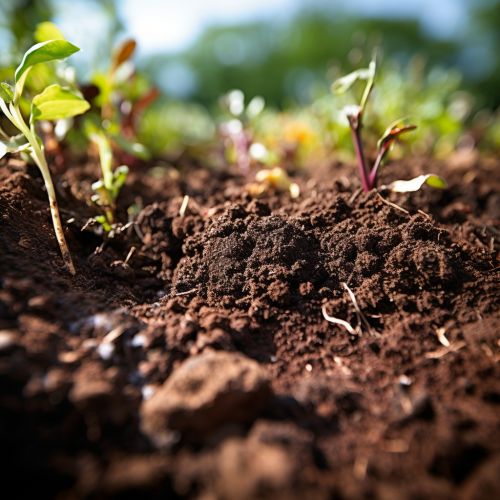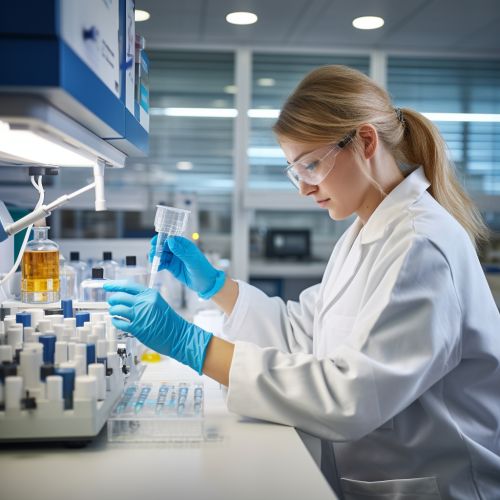Metagenomics
Introduction
Metagenomics is the study of genetic material recovered directly from environmental samples. The broad field may also be referred to as environmental genomics, ecogenomics or community genomics. While traditional microbiology and microbial genome sequencing rely upon cultivated clonal cultures, early environmental gene sequencing cloned specific genes (often the 16S rRNA gene) to produce a profile of diversity in a natural sample. Such work revealed that the vast majority of microbial biodiversity had been missed by cultivation-based methods. Recent studies use "shotgun" Sanger sequencing or massively parallel pyrosequencing to get largely unbiased samples of all genes from all the members of the sampled communities. Because of its power to reveal the previously hidden diversity of microscopic life, metagenomics offers a powerful lens for viewing the microbial world that has the potential to revolutionize understanding of the entire living world.
History
The term "metagenomics" was first used by Jo Handelsman, Jon Clardy, Robert M. Goodman, and others, and first appeared in publication in 1998. The concept being that the collective genomes of an environment, the metagenome, could be sampled and studied in a culture independent manner. The term metagenome referenced the idea that a collection of genes sequenced from the environment could be analyzed in a way analogous to the study of a single genome. At that time, the idea was fairly revolutionary because the primary focus of microbiology and genomics was the individual organism. In fact, the Human Genome Project was in full swing, making the idea of a community of genomes novel and exciting.
Techniques
Shotgun sequencing is a sequencing method designed for analysis of DNA sequences using the chain termination method for sequencing random DNA strands. It is named by analogy with the rapidly expanding, quasi-random firing pattern of a shotgun. The chain termination method of DNA sequencing ("Sanger sequencing") can only be used for short DNA strands of 100 to 1000 base pairs. Due to this size limit, longer sequences are subdivided into smaller fragments that can be sequenced separately. The shotgun sequencing method is used for randomly picking out small sections of DNA from a larger whole to sequence. Thus, the entire sequence of the larger whole can be determined.
16S rRNA gene sequencing is a common amplicon sequencing method used to identify and compare bacteria present within a given sample. 16S rRNA gene sequencing has made it possible to study bacteria in various environments such as soil, ocean water, and the human body.
Pyrosequencing is a method of DNA sequencing (determining the order of nucleotides in DNA) based on the "sequencing by synthesis" principle. It differs from Sanger sequencing, in that it relies on the detection of pyrophosphate release on nucleotide incorporation, rather than chain termination with dideoxynucleotides.
Applications
Metagenomics has many practical applications. In agriculture, for example, metagenomics can be used to study the soil and other environments to increase the understanding of the microbial world and its functions. This can lead to the discovery of new genes that can be used to improve crop yield and protect crops against diseases.
In medicine, metagenomics can be used to identify the microbial content of the human body, which can provide information about the role of microbes in health and disease. This can lead to the development of new diagnostic tools, treatments, and prevention strategies for various diseases.
In environmental science, metagenomics can be used to study the microbial communities in different environments, such as oceans, soils, and air. This can provide information about the role of microbes in various ecological processes, such as nutrient cycling, climate regulation, and pollution degradation.
In biotechnology, metagenomics can be used to discover new enzymes and other bioactive compounds that can be used in various industrial processes, such as biofuel production, waste treatment, and chemical synthesis.
Challenges
Despite its potential, metagenomics also faces several challenges. One of the main challenges is the complexity of microbial communities, which can contain thousands of different species, each with its own unique set of genes. This makes it difficult to analyze and interpret metagenomic data.
Another challenge is the lack of reference genomes. Most microbes cannot be cultured in the laboratory, and therefore their genomes cannot be sequenced using traditional methods. This makes it difficult to assign metagenomic sequences to specific organisms.
A third challenge is the issue of contamination. Metagenomic samples can be contaminated with DNA from other sources, which can interfere with the analysis and interpretation of the data.
Despite these challenges, advances in technology and computational methods are making it increasingly possible to overcome these obstacles and unlock the full potential of metagenomics.












